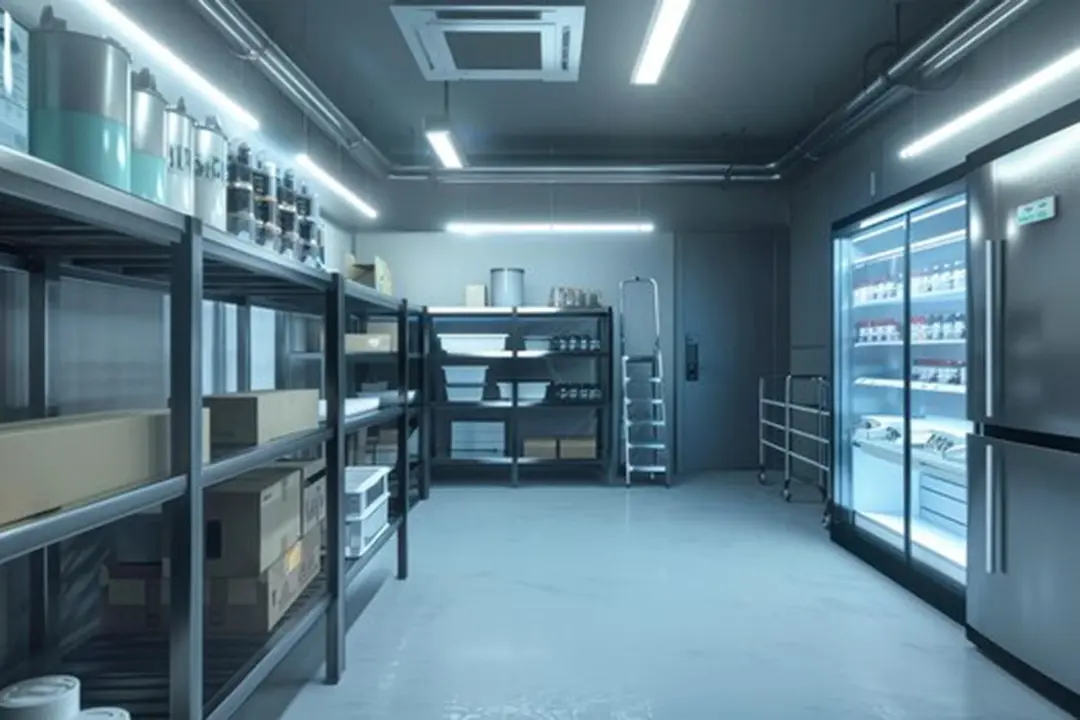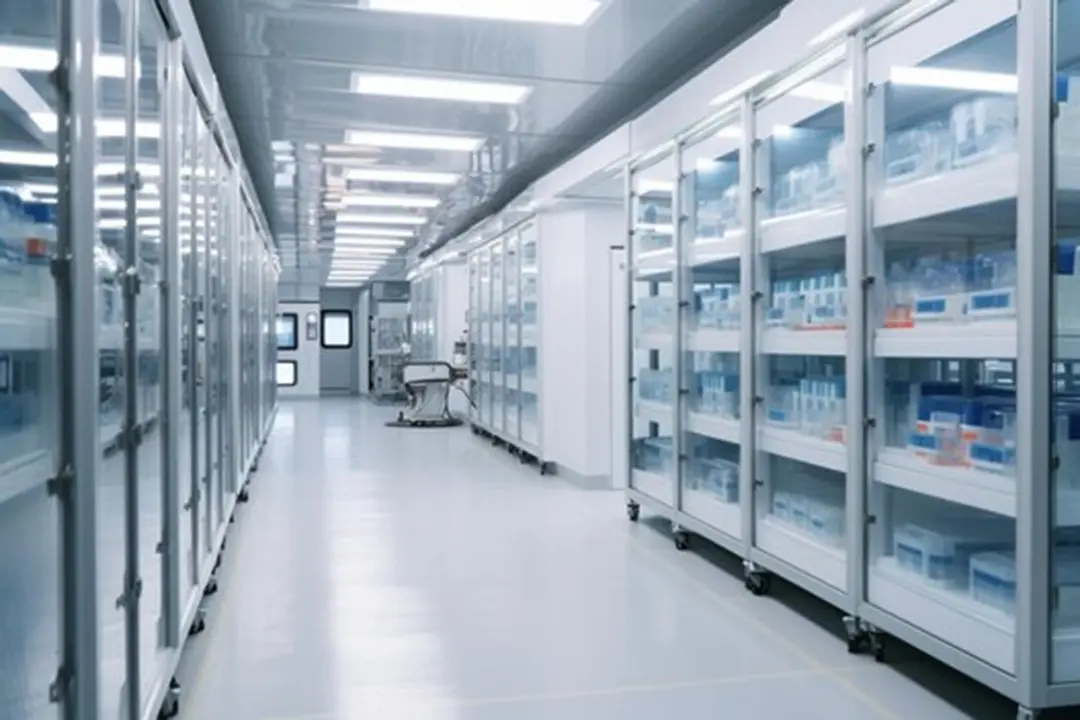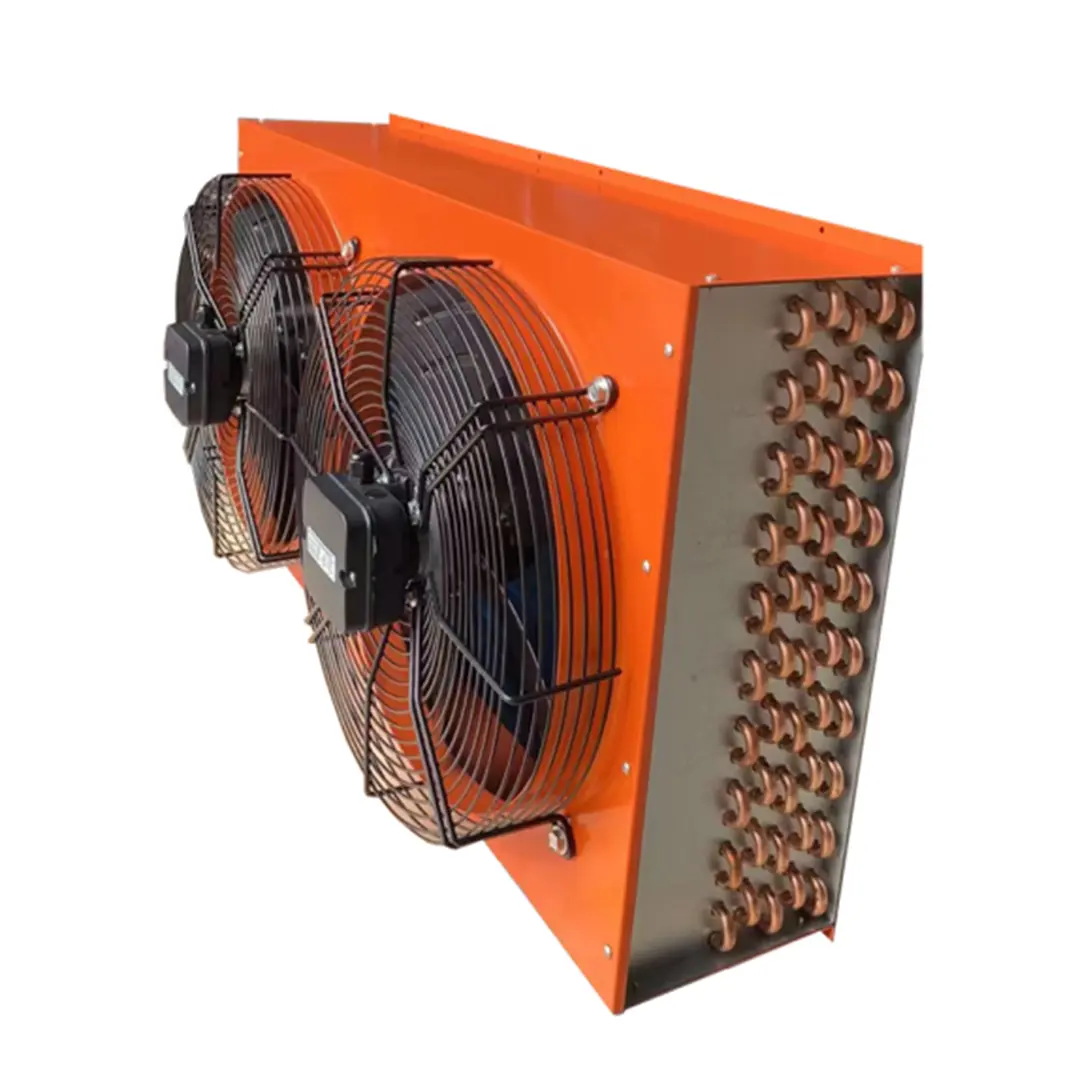Heavy Frost on Heat Exchangers? 3 Potential Causes

Heavy frost on heat exchangers creates significant challenges for system performance. It acts as an insulator, reducing the heat transfer efficiency of devices like heat pumps. This inefficiency forces systems to consume more energy, increasing operational costs. Frost can also block airflow channels, leading to higher air pressure drops and potential damage to components. In extreme cases, indoor air quality may decline due to restricted ventilation. For systems like a copper fin heat exchanger, understanding the root causes of frost formation is essential to maintaining efficiency and preventing costly repairs.
Key Takeaways
- Clean or change air filters often to keep airflow steady. This easy task stops frost and keeps the system working well.
- Check refrigerant levels and lines regularly. Fix leaks and make sure refrigerant levels are right to stop frost and improve cooling.
- Control humidity near heat exchangers. Use dehumidifiers and better airflow to lower frost buildup.
- Make sure refrigerant lines and heat exchangers are insulated well. Good insulation keeps temperatures steady and avoids frost problems.
- Call an HVAC expert if frost doesn’t go away. They can find and fix tricky problems quickly.
Insufficient Airflow

Blocked or Dirty Air Filters
How clogged filters restrict airflow
Blocked or dirty air filters are a frequent culprit behind heavy frost on heat exchangers. When filters become clogged, they restrict the flow of air through the system. This reduced airflow prevents the heat exchanger from functioning efficiently. Without sufficient air movement, the evaporator coil can drop to temperatures lower than intended. This temperature imbalance often results in frost forming on the coil. I’ve seen this issue arise in systems where maintenance schedules are neglected, leading to significant performance drops.
Signs your air filters need replacement
Recognizing when air filters need replacement is crucial. A noticeable decrease in airflow from vents is one of the first signs. You might also observe dust accumulation around the vents or an increase in energy bills due to the system working harder. If the filter appears visibly dirty or clogged during inspection, it’s time for a replacement. Regularly checking and replacing filters can prevent frost buildup and maintain system efficiency.
Obstructed Air Vents or Ducts
Common causes of vent blockages
Obstructions in air vents or ducts can also lead to insufficient airflow. Furniture, curtains, or debris often block vents, disrupting the system’s ability to circulate air. In some cases, pests or accumulated dust inside the ducts can create blockages. These issues reduce airflow and increase the risk of frost formation on heat exchangers.
How to inspect and clear obstructions
Inspecting vents and ducts is a straightforward process. Start by ensuring that no objects block the vents. Use a flashlight to check for visible debris or dust inside the ducts. If you notice significant buildup, consider professional duct cleaning services. Keeping vents clear ensures proper airflow and prevents frost-related issues.
Malfunctioning Fans or Blowers
How fan issues impact airflow
Fans or blowers play a critical role in maintaining airflow. When they malfunction, the system cannot circulate air effectively. This lack of airflow causes the evaporator coil to cool unevenly, increasing the likelihood of frost buildup. I’ve encountered systems where worn-out fan motors or damaged blades were the root cause of airflow problems.
Tips for diagnosing and fixing fan problems
Diagnosing fan issues requires careful observation. Listen for unusual noises, such as grinding or rattling, which may indicate mechanical problems. Check for visible damage to the fan blades or motor. If the fan isn’t spinning at the correct speed, it may need repair or replacement. Regular maintenance of fans and blowers can prevent these issues and ensure consistent airflow.
Refrigerant Issues
Low Refrigerant Levels
Causes of refrigerant leaks
Refrigerant leaks often result from wear and tear on system components. Over time, joints and seals can degrade, creating small openings where refrigerant escapes. Corrosion on refrigerant lines also contributes to leaks, especially in systems exposed to moisture or chemicals. I’ve seen cases where improper installation or physical damage to the lines led to significant refrigerant loss. Regular inspections can help identify these vulnerabilities early.
How to identify and address low refrigerant levels
Low refrigerant levels manifest through reduced cooling performance and frost buildup on the evaporator coil. When refrigerant temperatures drop, frost forms more rapidly, blocking airflow and increasing pressure drops. I recommend checking for hissing sounds near refrigerant lines or oil stains around connections, as these often indicate leaks. Addressing the issue involves repairing the damaged components and recharging the system with the correct refrigerant type. Proper refrigerant management prevents frost accumulation and ensures optimal system efficiency.
Incorrect Refrigerant Charge
The importance of proper refrigerant levels
Maintaining the correct refrigerant charge is crucial for system performance. An overcharged system can lead to excessive pressure, while an undercharged system struggles to cool effectively. Both scenarios disrupt the heat transfer process, increasing the risk of frost formation. Research shows that lower refrigerant temperatures exacerbate frost buildup, highlighting the importance of precise refrigerant management.
How improper charging leads to frost buildup
Improper refrigerant charging creates temperature imbalances within the system. When refrigerant levels are too low, the evaporator coil cools unevenly, encouraging frost formation. I’ve encountered systems where incorrect charging caused frost to accumulate rapidly, reducing airflow and damaging components. To prevent this, I recommend using calibrated tools to measure refrigerant levels during maintenance.
Refrigerant Line Problems
Common issues with refrigerant lines
Refrigerant lines face challenges like corrosion, physical damage, and blockages. Corrosion weakens the lines, leading to leaks, while blockages restrict refrigerant flow, causing temperature fluctuations. I’ve seen systems where damaged lines resulted in frost buildup due to uneven cooling.
How to inspect and maintain refrigerant lines
Inspecting refrigerant lines involves checking for visible damage, corrosion, or oil stains. I suggest using a flashlight to examine hard-to-reach areas and running your hand along the lines to detect leaks. Regular maintenance, including cleaning and sealing connections, ensures smooth refrigerant flow and minimizes frost-related issues.
Environmental Factors
High Humidity Levels
How humidity contributes to frost formation
High humidity levels significantly increase the risk of frost on heat exchangers. When moist air comes into contact with the cold surface of the heat exchanger, the water vapor condenses and freezes. This frost layer acts as an insulator, reducing the system's ability to transfer heat efficiently. In my experience, systems operating in environments with relative humidity above 70% often face moderate to significant frost buildup. For example, energy recovery ventilators (ERVs) are particularly vulnerable because they recover moisture from exhaust air, which lowers the frost formation threshold. This makes them more susceptible to frost compared to heat recovery ventilators (HRVs).
| Relative Humidity | Heat Transfer Rate Impact | Overall Heat Transfer Coefficient Impact | Pressure Drop Impact |
|---|---|---|---|
| 60% | Minimal | Minimal | Minimal |
| 70% | Moderate | Moderate | Moderate |
| 80% | Significant | Significant | Significant |
Tips for managing humidity around heat exchangers
Managing humidity levels can prevent frost formation. I recommend using dehumidifiers in areas with consistently high humidity. Proper ventilation also helps maintain balanced indoor air moisture. Regularly inspecting and cleaning the heat exchanger ensures that accumulated frost does not worsen the problem. For systems like ERVs, consider installing frost control mechanisms to mitigate the impact of high humidity.
Extremely Low Temperatures
Why cold environments increase frost risk
Operating in extremely low temperatures increases frost risk. When the surrounding air is cold, the heat exchanger's surface temperature drops below the dew point, causing moisture to freeze rapidly. This frost buildup restricts airflow and reduces heat transfer efficiency. I’ve observed that systems exposed to sub-zero temperatures often experience severe frost accumulation, especially when combined with high humidity.
Solutions for operating in low-temperature conditions
To address this, I suggest using heat exchangers with built-in defrost cycles. These systems periodically warm the surface to melt accumulated frost. Adding insulation around the heat exchanger can also help maintain a stable surface temperature. For outdoor units, wind barriers can reduce exposure to freezing air, minimizing frost formation.
Poor System Insulation
How inadequate insulation leads to frost
Poor insulation allows cold air to penetrate the system, causing the heat exchanger to cool unevenly. This uneven cooling creates ideal conditions for frost to form. I’ve seen cases where insufficient insulation around refrigerant lines or the heat exchanger itself led to excessive frost buildup, reducing system efficiency.
Steps to improve insulation and prevent frost
Improving insulation is a straightforward way to prevent frost. Use high-quality insulating materials around refrigerant lines and the heat exchanger. Inspect existing insulation for wear or damage and replace it as needed. For systems operating in extreme conditions, consider upgrading to specialized insulation designed for low temperatures. These steps ensure consistent performance and reduce the risk of frost-related issues.
The Role of Copper Fin Heat Exchangers

Why Copper Fin Heat Exchangers Are Susceptible to Frost
Unique properties of copper fin heat exchangers
Copper fin heat exchangers excel in thermal conductivity, making them highly efficient for heat transfer. Copper’s ability to conduct heat quickly allows these exchangers to perform well in various applications, from refrigeration to HVAC systems. However, this same property makes them more prone to frost formation. The rapid cooling of copper surfaces can cause moisture in the air to condense and freeze, especially in high-humidity environments. I’ve observed that their thin fins, designed for maximum surface area, can accumulate frost faster than other materials. This unique combination of efficiency and susceptibility requires careful monitoring.
How frost impacts their performance
Frost buildup on a copper fin heat exchanger significantly reduces its efficiency. The frost acts as an insulating layer, preventing effective heat transfer. Over time, this can lead to increased energy consumption and uneven cooling. In extreme cases, the frost can block airflow entirely, causing the system to overwork and potentially fail. I’ve seen systems where unchecked frost led to costly repairs and downtime. Addressing frost early ensures the exchanger continues to operate at peak performance.
Maintenance Tips for Copper Fin Heat Exchangers
Cleaning and inspecting copper fins
Regular cleaning is essential for maintaining a copper fin heat exchanger. Dust and debris can trap moisture, accelerating frost formation. I recommend using a soft brush or compressed air to clean the fins without damaging them. During inspections, look for signs of corrosion or physical damage. These issues can compromise the exchanger’s efficiency and make it more susceptible to frost. Consistent maintenance keeps the system running smoothly and extends its lifespan.
Preventive measures to reduce frost buildup
Preventing frost on a copper fin heat exchanger involves a combination of strategies. First, ensure proper airflow by keeping filters and vents clean. Second, monitor humidity levels around the system. Using a dehumidifier can help in high-moisture environments. Third, consider applying anti-frost coatings to the fins. These coatings reduce the adhesion of frost, making it easier to manage. I’ve found that implementing these measures not only minimizes frost but also improves overall system reliability.
About senjun
senjun's Expertise in Heat Exchangers
Overview of senjun's product range
At senjun, I’ve seen firsthand how our dedication to innovation drives the development of high-quality heat exchangers. Our product range includes wire tube condensers and copper aluminum fin heat exchangers. These products serve a variety of applications, such as refrigerators, freezers, drinking fountains, display cabinets, and medical ultra-low temperature refrigerators. We also cater to specialized needs in ice makers, dehumidifiers, and wine cabinets. This versatility ensures that our solutions meet the demands of diverse industries.
Commitment to quality and innovation
Quality and innovation form the backbone of senjun's operations. Every product undergoes rigorous testing to ensure it meets industry standards. I’ve observed how our team continuously researches new materials and designs to enhance performance and durability. This commitment allows us to deliver reliable and efficient solutions, even in challenging environments. By prioritizing customer satisfaction, we maintain our reputation as a trusted name in the heat exchanger industry.
senjun's Copper Aluminum Fin Heat Exchangers
Applications in various industries
Copper aluminum fin heat exchangers from senjun excel in multiple industries. I’ve seen them used in commercial refrigeration, HVAC systems, and medical cooling applications. Their ability to handle extreme temperatures makes them ideal for ultra-low temperature refrigerators and dehumidifiers. These exchangers also play a crucial role in maintaining optimal conditions in wine cabinets and display units.
Benefits of using senjun's heat exchangers
Senjun’s copper aluminum fin heat exchangers offer several advantages. Their high thermal conductivity ensures efficient heat transfer, reducing energy consumption. The lightweight design simplifies installation and maintenance. I’ve noticed that their durability minimizes the need for frequent replacements, saving costs over time. These features make them a preferred choice for businesses seeking reliable and efficient cooling solutions.
Heavy frost on heat exchangers often stems from three main causes: insufficient airflow, refrigerant issues, and environmental factors. Addressing these problems requires proactive maintenance. I always recommend cleaning air filters, inspecting refrigerant levels, and improving insulation to prevent frost buildup.
Tip: Regular care ensures your system operates efficiently and avoids costly repairs.
Copper fin heat exchangers, like those from senjun, demand specific attention to maintain peak performance. If frost persists despite these efforts, consult a professional HVAC technician. Their expertise can help diagnose and resolve the issue effectively.
FAQ
1. How often should I clean my heat exchanger to prevent frost buildup?
I recommend cleaning your heat exchanger every three months. For systems in high-humidity environments, monthly inspections may be necessary. Regular cleaning ensures proper airflow and reduces the risk of frost accumulation.
2. What tools can I use to inspect refrigerant lines for leaks?
Use a flashlight to check for visible damage or oil stains. A leak detector can help identify refrigerant leaks. I also suggest running your hand along the lines to feel for escaping air or refrigerant.
3. Can high humidity levels damage my heat exchanger?
Yes, high humidity can lead to frost formation, which reduces efficiency. I suggest using a dehumidifier or improving ventilation to manage moisture levels around your system.
4. What are the signs of a malfunctioning fan in my system?
Unusual noises like grinding or rattling often indicate fan issues. Reduced airflow or uneven cooling are also common signs. I recommend inspecting the fan blades and motor for visible damage or wear.
5. Are senjun’s copper aluminum fin heat exchangers suitable for extreme conditions?
Absolutely! Senjun’s heat exchangers are designed for durability and efficiency. They perform well in ultra-low temperatures and high-humidity environments, making them ideal for demanding applications like medical refrigeration and dehumidifiers.
Tip: Regular maintenance and inspections are key to preventing frost-related issues and ensuring your system operates efficiently.


















